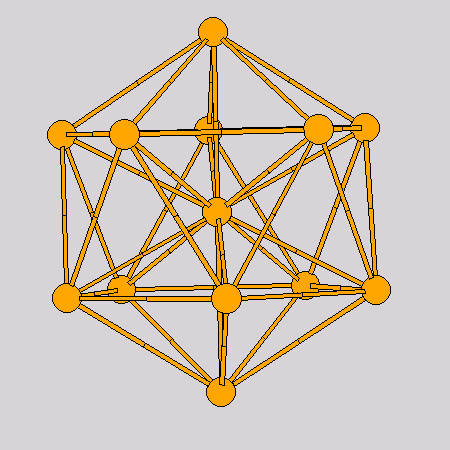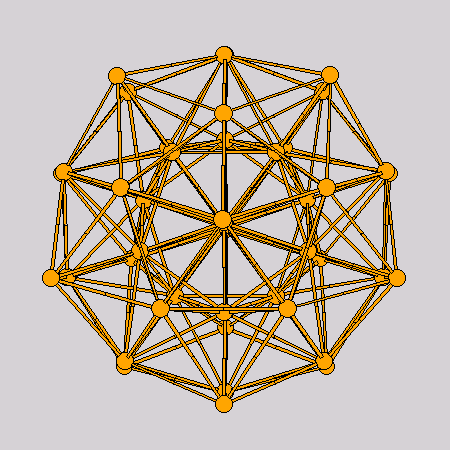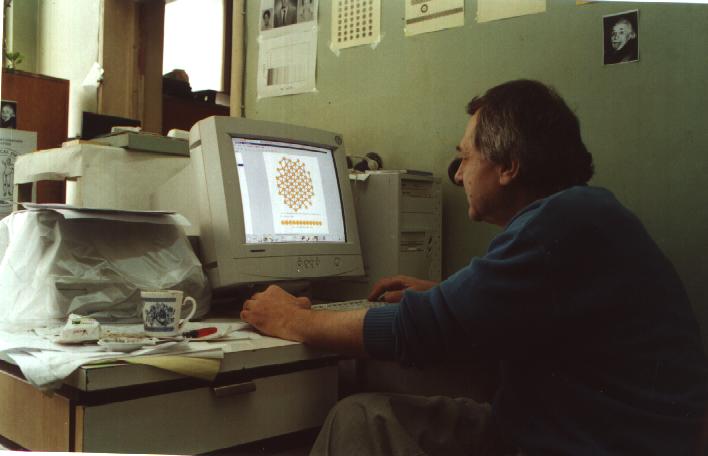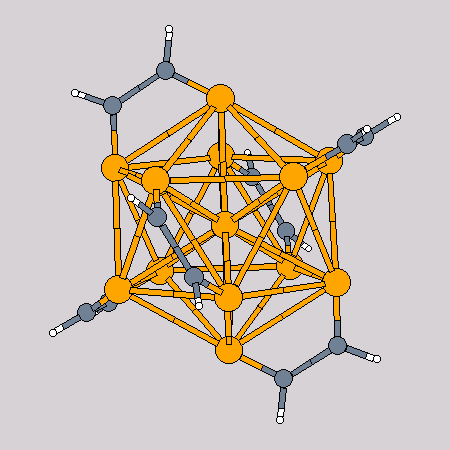|
The NANOME Project Mapping the Nanoscopic World |
|
Our world is made of atoms. Atoms bind together to form
molecules. The latter inter-connect themselves to form supramolecules,
giant atomic and molecular aggregates, matter, and finally life. While
organizing themselves in supra-atomic forms the atomic aggregates
get functional. At one end of the chain matter is rather poorly organized
and functional in comparison with the other end where the living matter
is highly organized and functional. Atoms may provide energy, emit
and absorb radiation, pointing toward the mathematical nature of the
world. In its successive forms of organization matter is electric
and magnetic, moves unde the action of its own forces, and has a fundamental
statistical character. On the other hand, life is individual, smart
and self-adapting, and finite in time. Matter is theorizable, while
life is not fully theorizable. A sui-generis principle of complementarity
works here too, self-consciousness and theory being complementary
to each other.
It is now widely agreed that the frontiers between matter and life get more fuzzy, that we may live our lives more in the matter realm while letting matter invades our lives. It is now deemed that we may wipe out the barriers between man and machine. We have already smart and self-adaptive materials, or advanced, composite, hybrid, exotic and biopolimerized ones, highly individual and with a finite lifetime indeed. While most of the vital organs and functions are taken over by sophisticated material machines, like drugs, implants, prostheses. Death itself looks like a process of quasi-crystalization of the living cells, and their prolonged fluidity may increase life expectancy.
The processes get more adaptive, and directly connected to the living cells. Electronics, magnetism and optics will work directly upon our nerves, while blood will carry all the chemical drugs we need to cure diseases, get healthier, control and extend living functionalities, and keep us alive as long as possible. The human body will be invaded by small quasi-chemical robots, working hard day and night for our body welfare. They will translate instantaneously our different languages, will provide us with our preferred sound and image broadcasts, or will readily produce our own, will read our thoughts and will take us forever in a virtual world of global race communion. Then we may control our own lives as well as others', we will dispose of living organisms, humans including, and moral questions will get us closer to God. All this is possibly conceivable at this moment due to the organized functionality of the atomic and molecular aggregates.
Functionally organized objects that may inter-connect matter with
life are the nanostructures. Nano suggests both dwarf things, but
it may be traced back to the nine in ten to minus nine meters,
This world is populated with new, strange objects. These nano-objects
are atomic clusters, or atomic quantum dots. They are bits of quasi-solids,
the smallest metals, conductors, magnets, semi- and superconductors
in the world. They are the nuclei of the condensed matter. They may
control the chemistry atom by atom, they may control the electricity
charge by charge, magnetism spin by spin, and optics and radiation
photon by photon. Their functions are entirely atomic and molecular.
With them we may act efficiently on the very atomic level. And such
actions give us a tremendous power and controll upon our macroscopic
world, upon living beings, upon materials and processes. Because the
macroscopic world is made of numbers of atoms as huge as Avogadro'
s number
The novel properties of the nanostructures originate in their exhibiting size (non-thermodynamic) and quantal effects. Quantal nature of the nanostructures will open the quantal world for our macroscopic scale, while the finite size effects will serve to interface the nano-objects with the macroscopic sample, a fundamental prerequisite for making use of their functionality. New words were coined for the new functions of the nanostructures at the atomic and molecular level, like nanoelectronics, moletronics, spintronics, magnetronics, quantal computing, comunication and information, etc. Coherent and entangled quantal states will provide a global, non-local physical action, which may change radically our nature.
The nanstructures are highly individual objects, almost each of its
own class, with particular properties that may change drastically
by adding, or removing only one atom. Icosahedral clusters of high
symmetry are illustrative in this respect, or self-assembling layers.
The physical and chemical properties of every such nano-object must
be described separately, by a new scientific discipline wich may be
called nanology, by its similarity with zoology. An atomic cluster
consists of Indeed, such a theory has been devised recently.[2] It is well-known that two basic theories are currently used to construct atomic aggregates, like molecules or supramolecules; these are the ab-initio wavefunction method and the density functional method, with its various versions. A basic analysis of these theories has been carried out, starting from first principles, and it was found that the main contribution to the atomic binding can be obtained by a quasi-classical description. It amounts to solving the Hartree-Fock equations by an iterative process in two steps, the first being the quasi-classical solution and the second being quantal corrections. A 3% accuracy can be attained in constructing atomic aggregates by pursuing this procedure. This new theory has been applied up to now to homo-atomic clusters of some metallic ions in a point-like approximation for the atomic-like orbitals, as well as to similar clusters deposited on surfaces, as a first step in investigating their interfacing with the macroscopic world. The further extensions of the computations will involve more realistic atomic-like orbitals, including their spatial variation, both radial and directional (angular), as well as the estimation of the quantal corrections. The theory provide at this moment the binding energy, both in the ground-state and in isomeric states, the geometric forms and clusters magic numbers, atomic positions, as well as the collective excitations like plasmons, and response to external fields like electric polarizability and diamagnetic susceptibility. The theory has been tested on heavy atoms, where the binding energy (quantal corrections included) has been obtained, as well as on metallic solids, whose cohesion has been estimated, the electron-phonon coupling, compressibility and sound velocity have been derived, and the theory of the normal Fermi liquid for the quasi-electron excitations has been reformulated in the context of the chemical cohesion. Quantal corrections will enable the derivation of the single-particle properties, of basic relevance for the ionization potentials, chemical affinity, various spectroscopies, and nano-magnetism.
All these properties are going to be computed and listed, classified and put in catalogues (both hard copies and electronic archives) for each nanostructure of any conceivable chemical composition and size. The work will be carried out in sections, devoted to carbon and its combinations for organic and living matter, silicon and germanium for classical electronics, aluminum, gallium, arsenic, etc for semiconducting nano-objects, simple metals (like alkali metals), transition metals, rare-earths, hydrogen, etc, and it will require qualified skills of a large variety, ranging from mathematicians and theoretical physicists, chemists, electronists, engineers, materials scientists, biophysicists and medical chemists, to software experts, archivists, librarians, market experts and even cartoonists and artists. The resulting nano-objects archives will be kept ready for designers of new materials and processes, chemical drugs, pharmaceutical products, nano-electronics, -magnetronics, -spintronics, -optics, and any other practitioners of the newly emerging field of nanosciences and nanotechnologies. Students will be included in this enterprise, which will provide scientific and technologic education, instruction and training, and demonstration will also be oferred to public and dissemination to mass-media, of the small, very small atomic nano-things that are going to change our life. All this work will be carried on in the Factory of the Chemical Bonds, where the archives will also be hosted, within the Nanome Project. Their output will be scientific products and services to the European community. Through their universality and the huge amount of work required, and information provided, the Nanome Project and the Factory of Chemical Bonds, as a new European research facility, fully meet the necessary European scale of ambition; through their grandeur they will attract more than a critical mass of European researchers, developers and skills; through their output they will provide a highly added-value to the European research. The newly emerging field of nanostructures needs a basic information background as a scientific prerequisite input for further expansion, which is provided by the present Nanome Project and Factory of Chemical Bonds put forward here. It will reinforce competitiveness and help solving societal problems in Europe, by its scope, timeliness, basic scientific information and input character for aplications, taking the Europe to a new stage of enhanced scientific and technologic excellence.
|




